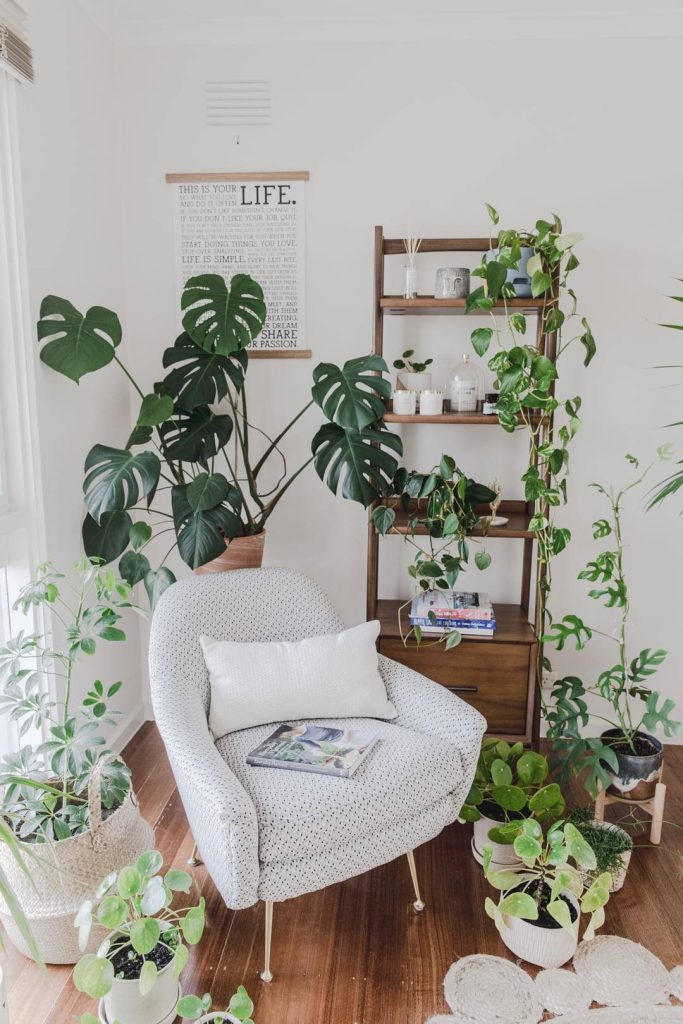Mindfulness and Clutter Reduction: Practices for a More Serene Space

The Importance of Mindfulness in Creating a Calm Environment
In our fast-paced lives, clutter can quickly collect and transform even the most organized spaces into chaotic zones, often leading to increased stress both physically and mentally. Many individuals, despite their best efforts, find themselves overwhelmed by an accumulation of items—whether it be stack piles of mail on the kitchen counter or unnecessary gadgets tightly crammed into closets. Recognizing this phenomenon, we can harness the power of mindfulness to declutter effectively, creating a serene oasis that not only enhances our physical surroundings but also enriches our mental state.
Mindfulness encourages us to be present and fully engaged in our experiences. To effectively incorporate this practice into your decluttering efforts, consider these essential aspects:
- Awareness: The first step in the decluttering process is recognizing the root causes of your clutter. Is it an emotional attachment to items? A habit of impulse buying? By pinpointing these underlying issues, you can craft more effective strategies. For example, keeping a journal to reflect on your relationship with certain items can unveil patterns that contribute to clutter accumulation.
- Intentionality: With mindfulness, every item in your environment should either serve a purpose or bring joy. Applying the principles of the popular KonMari method can help here; as you handle each item, ask yourself if it sparks joy. If not, consider donating or recycling it. This mindful approach not only reduces clutter but also fosters appreciation for the belongings that truly improve your life.
- Mindful Practices: Techniques such as deep breathing exercises or meditation can complement your decluttering process. For instance, before starting to organize, take a few minutes to meditate on what creates peace in your life. This foundational clarity can inform your decisions and keep you centered throughout the process.
Visualize walking into a home where each corner is clear and organized, and the atmosphere resonates with a peaceful energy. This synergy of mindfulness and a clutter-free environment not only aids in achieving clearer thoughts but also enhances your ability to focus on the tasks at hand. Numerous studies support this correlation; a clutter-free space has been linked to improved concentration levels and overall productivity.
Through this exploration of mindfulness in decluttering, you will uncover the profound mental freedom that comes with reducing physical clutter. Embrace this journey with actionable tips and strategies that invite tranquility into your daily life. By creating a harmonious balance within your environment, you can elevate not just your home, but also your mind, cultivating a sanctuary that promotes emotional well-being and clarity.
DISCOVER MORE: Click here to boost your productivity

Understanding the Connection Between Mindfulness and Clutter
To fully appreciate the impact of mindfulness on clutter reduction, it is essential to first understand how our physical environment interacts with our mental state. Clutter not only occupies physical space but also intrudes upon our mental clarity. In a world where distractions abound, our surroundings can either enhance or hinder our focus. A cluttered space compels our attention, making it challenging to concentrate on the task at hand. By practicing mindfulness, we can cultivate a more serene environment that fosters peace and productivity.
One of the key elements of mindfulness is the ability to observe thoughts and feelings without judgment. This approach encourages us to evaluate our possessions through a different lens. When faced with piles of items, instead of getting overwhelmed, we can pause and ask ourselves why we hold on to certain things. Consider the following points to deepen your awareness:
- Emotional Triggers: Many times, clutter is linked to our emotions. Items may remind us of past experiences, serving as sentimental keepsakes or sources of guilt. Acknowledging these triggers can help us make more objective decisions about what to keep.
- Mindless Accumulation: In our consumer-driven culture, the practice of mindless shopping based on trends or advertisements can lead to the unintentional buildup of unwanted items. Recognizing the difference between need and want is crucial.
- Physical Space vs. Mental Space: Decluttering is not just about creating a tidy home; it also contributes to mental clarity. Research indicates that a chaotic environment can lead to increased levels of stress and anxiety, making it imperative to address clutter for our overall well-being.
As you begin your decluttering journey, consider creating a mindfulness checklist to guide you through the process. This checklist can include:
- Set a timer for dedicated decluttering sessions to maintain focus.
- Practice deep breathing before and during the process to stay present.
- Visualize your ideal space and let this image motivate your efforts.
- Reflect regularly on your feelings regarding items you possess.
Through such practices, you can start to shift your mindset towards a more intentional engagement with your belongings. This shift is vital not only for reducing clutter but also for reinforcing the notion that a serene space can profoundly influence our lives. The clear benefits of mindfulness become evident as we uncover layers of emotional baggage tied to our possessions, paving the way for a more meaningful connection to the items we choose to keep.
Ultimately, mindfulness serves as a powerful tool, guiding us in making conscious choices about what we surround ourselves with. As we take the necessary steps toward reducing clutter, we simultaneously cultivate mental resilience, enhancing our ability to navigate life’s complexities with greater ease.
| Mindfulness Practices | Clutter Reduction Benefits |
|---|---|
| Meditation Techniques | Enhanced focus and clarity in daily tasks, reducing stress. |
| Gratitude Journaling | Improved mood and mental well-being, creating a positive atmosphere. |
| Breath Awareness | Reduce anxiety levels, leading to a more organized living space. |
| Mindful Decluttering | Clearer spaces promote a serene and peaceful home environment. |
The integration of mindfulness practices with clutter reduction can lead to profound transformations in our living spaces and mental well-being. Engaging in meditation techniques fosters a heightened sense of clarity and focus, allowing individuals to approach their environments with intention. This not only minimizes distractions but actively reduces stress associated with clutter.Further, gratitude journaling acts as a powerful tool in fostering a positive atmosphere at home. By focusing on what one appreciates, the clutter can be viewed through a lens of opportunity rather than chaos. Practices such as breath awareness significantly lower anxiety levels, creating a conducive space for organization. This becomes particularly useful in maintaining a clutter-free environment that encourages tranquility. Finally, mindful decluttering not only creates clearer spaces but also cultivates a serene atmosphere that enhances overall quality of life. The intersection of mindfulness and decluttering creates a harmonious home, ripe for personal reflection and peace.
LEARN MORE: Click here to discover the impact of clutter on mental health
Mindful Practices for Decluttering Your Space
Adopting mindfulness practices can transform the daunting task of decluttering into a meaningful and rewarding experience. By integrating specific techniques into your routine, you can effectively create a serene environment that not only reduces physical clutter but also promotes calmness in your mental state.
One effective practice is known as the Five-Senses Method. This approach allows you to engage deeply with your surroundings while decluttering by focusing on each of your senses:
- Sight: Take a moment to observe your space before you start. Note the colors, shapes, and placement of your items. Visualizing what a clutter-free version of your space looks like can provide motivation.
- Sound: Incorporate sounds that promote relaxation. Whether it’s soft music or nature sounds, having a calming auditory backdrop can help keep you grounded.
- Smell: Use scents like lavender or eucalyptus, known for their calming effects. Introducing these fragrances during your decluttering sessions can enhance your overall experience.
- Touch: As you inspect items, consider their texture and condition. This mindful engagement can reinforce the connection to your belongings, making it easier to part with items that no longer serve a purpose.
- Taste: Savor a warm cup of herbal tea or water. This simple act of drinking can bring you back to the present moment, allowing for deliberate decision-making as you evaluate each item.
Another profound practice is the One In, One Out Rule. This principle states that for every new item you bring into your home, an existing item must leave. This not only reduces clutter over time but also encourages conscious purchasing habits. Paired with mindfulness, you can assess the necessity and value of new items before acquiring them. Ask yourself, “Does this item bring joy or serve a purpose?” This inner dialogue can significantly minimize impulse purchases that contribute to clutter.
Engaging in a 30-Day Declutter Challenge can also be an effective way to integrate mindfulness into your clutter-reduction efforts. Each day, designate a specific area or category of items (like books, clothing, or kitchen utensils) to focus on. This limited scope helps maintain attention and prevents overwhelm. By the end of the month, you will have systematically evaluated your belongings and created a more intentional living space.
In addition to these strategies, it’s essential to foster a sense of gratitude towards your possessions. Before deciding to part with an item, take a moment to appreciate its role in your life. This appreciation can help mitigate feelings of loss and promote a more positive approach to decluttering. Keeping a gratitude journal where you document items you are thankful for can reinforce this mindset.
Lastly, consider adopting a regular mindfulness practice, such as meditation or yoga. Engaging in these activities fosters a greater sense of awareness and presence, which can translate into your approach to your physical environment. Studies have shown that individuals who practice mindfulness are better equipped to manage stress and make decisions, which plays a crucial role in the decluttering process.
DON’T MISS: Click here for expert tips on maximizing small spaces
Conclusion
In a world often filled with distractions and noise, the intersection of mindfulness and clutter reduction offers a breath of fresh air, inviting individuals to reclaim their spaces and enhance their well-being. By incorporating mindful practices such as the Five-Senses Method, the One In, One Out Rule, or the structured approach of a 30-Day Declutter Challenge, one not only cleanses their physical environment but fosters a profound connection with their belongings.
These techniques encourage us to engage intentionally with our possessions, allowing us to discern what truly adds value and joy to our lives. Moreover, cultivating a sense of gratitude helps mitigate the emotional weight of letting go, turning decluttering into a transformative journey rather than a chore.
As we embrace regular mindfulness practices, such as meditation or yoga, we cultivate an awareness that extends beyond the physical space we inhabit. This heightened consciousness enables us to navigate our choices with greater clarity, ultimately leading to more serene and harmonious living environments. With every mindful decision, we chip away at chaos, paving the way for tranquility.
In summary, the journey of creating a serene space through mindfulness not only enhances our surroundings but also nurtures our mental and emotional health. By committing to these practices, we can foster a peaceful atmosphere that reflects our values and intentions, inviting a sense of calm amidst the storms of modern life.
Related posts:
The Art of Organizing: Creating Effective Storage Systems to Reduce Clutter
Clutter and Creativity: How an Organized Space Can Stimulate Innovation and Personal Expression
How Decluttering Can Transform Your Personal Space into a Minimalist Retreat
The Emotional Impact of Decluttering on Personal Life
The Impact of Reducing Clutter on Sustainability: Living with Less for a Cleaner Planet
Digital Minimalism: How Reducing Virtual Clutter Can Improve Your Life

Linda Carter is a writer and organization expert specializing in minimalism and personal organization. With extensive experience helping individuals create clutter-free, functional spaces and adopt mindful habits, Linda shares her knowledge on our platform. Her goal is to empower readers with practical advice and strategies to simplify their lives, stay organized, and achieve a sense of calm and balance in their daily routines.